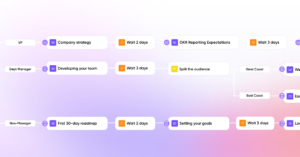This Service Level Agreement (“SLA”) is subject to the terms of the applicable Dynamic Signal Software as a Service Terms and Conditions between Dynamic Signal, Inc. (“Dynamic Signal”) and Customer (“Agreement”). We reserve the right to change the terms of this SLA in accordance with the Agreement.
Availability
- Definitions. The following definitions shall apply to this SLA. Capitalized terms, not otherwise defined herein, will have the meanings specified in the Agreement.“Downtime” means the time during which the Service Offering is unavailable (as measured from Dynamic Signal’s production data center internet connection points), excluding Force Majeure Events, Scheduled Maintenance, and Scheduled Updates.“Force Majeure Events” means events beyond Dynamic Signal’s reasonable control, which include, but are not limited to, acts of God, acts of government, flood, fire, earthquake, civil unrest, acts of terror, strikes or labor problems, computer, internet, or telecommunications failures, delays or network intrusions, or denial of service and any other degradations of the Service caused by third parties.“Service Availability” is a ratio calculated each month (based on 24-hour days for the number of days in the applicable month) that the Service is available to Customer (excluding Downtime from Force Majeure Events, Scheduled Maintenance, or Scheduled Updates), as measured from Dynamic Signal’s production data center internet connection points, as follows:“Service Availability” = ((total minutes in calendar month – total minutes of Downtime) / total minutes in calendar month) x 100.“Scheduled Maintenance” means scheduled maintenance performed by Dynamic Signal to keep the Service Offering operating optimally. Dynamic Signal will provide Customer with notice no less than seventy-two (72)-hours prior to the Scheduled Maintenance event.“Scheduled Update” means a scheduled deployment of program code introducing a new version, feature, or functionality of the Service. Dynamic Signal will provide Customer with notice no less than seventy-two (72)-hours prior to the Scheduled Update event.
- Service Availability. During the Service Term, Dynamic Signal will provide the Service 24 hours per day, seven days per week, 365 days per year with a Service Availability of 99.9% (the “Availability Commitment”).
- SLA Credits. If, in any month, the Service Availability does not meet the Availability Commitment, then Dynamic Signal shall provide, a credit (“SLA Credit”) in accordance with the table below. Each SLA Credit will be calculated by multiplying (i) the prorated monthly subscription Service (or license) fee charged for the affected month by (ii) the applicable SLA Credit percentage set forth in the table below.
| Service Availability | SLA Credit Percentage |
| 100% – 99.9% | 0.0% |
| < 99.9% – 99.5% | 2.0% |
| < 99.5% – 98% | 5.0% |
| < 98% | 10.0% |
- SLA Credit Requests and Application. In order to receive an SLA Credit, Customer must make a request for SLA Credit by filing a support request via email (at support@dynamicsignal.com) within thirty (30) days of the last calendar day of the month in which Service Availability was less than the Availability Commitment. Dynamic Signal will review the request and if Dynamic Signal confirms the Downtime, then the Credit will be applied within thirty (30) days of Dynamic Signal’s receipt of Customer’s Credit request. SLA Credits are exclusive of any applicable taxes.Any Credits issued pursuant to this SLA will be applied towards the invoice for the month following the calendar day on which Dynamic Signal receives Customer’s SLA Credit request. SLA Credits will only be applied toward the Service subscription fee for the applicable instance of the Service impacted by the Downtime and cannot be used to offset any fees incurred by Customer for professional services, implementation, consulting, training, or other products or services. In the event that Customer is entitled to an SLA Credit after termination of the Agreement, Dynamic Signal will issue Customer a refund in the amount of the Credit within thirty (30) days of the termination effective date.
- SLA Credit Limitations. Customer is not eligible for any SLA Credits if: (i) Customer is delinquent in its payment obligations; (ii) Customer exceeds the maximum community or other usage limits allowed under the Agreement; or (iii) the Downtime attributable to Customer’s acts or omissions (or by the acts or omissions of Customer’s representatives or users) or use of the Service in breach of the Agreement. The SLA Credits and the termination rights specified above are Customer’s sole and exclusive remedies for any Downtime occurring during the Service Term.
Support Issues Production Severity Levels – Response and Escalation
- In the event of a support issue, Customer shall first reasonably self-diagnose the support issue and suggest to Dynamic Signal an appropriate Severity LeveI designation. Dynamic Signal shall validate Customer’s Severity Level designation, or notify Customer of a proposed change in the Severity Level designation to a higher or lower level with explanation for the proposal.
- Response Time as described below is the period from the time the Production ticket was logged in the support ticket with Dynamic Signal until Dynamic Signal responds to Customer and/or escalation within Dynamic Signal, if appropriate. Because of the widely varying nature of issues, it is not possible to provide specific resolution commitments.
- Severity level – P1:
- Definition: CRITICAL/URGENT: The Incident stops most of the business or multiple Hubs/Communities. The issue is occurring in a production environment. The Incident impacts many users across multiple hubs or programs and can cause user disruption or data collection problems. There is no workaround for the issue.
- Response Commitment: Dynamic Signal will respond within one (1) hour of receipt of case
- Resolution: Dynamic Signal will work to resolve the problem until the Service is returned to normal operation. Customer will be notified of status changes.
- Escalation: If the problem has not been resolved within one (1) hour, Dynamic Signal will escalate the ticket to the appropriate Dynamic Signal team. The escalated problem will have higher priority than ongoing support, development or operations initiatives.
- Customer Response Commitment: Customer shall remain accessible by phone/email for troubleshooting from the time a Severity P1 issue is logged until such time it is resolved.
- Severity level – P2:
- Definition: HIGH: One or more users can’t follow a key process, or a large part of the Business suffers a major issue. Customer has problems with some of the users, though is isolated to just one hub or community. Can access the platform on at least one channel/access point. There is no workaround for the issue.
- Response Commitment: Dynamic Signal will respond within four (4) business hours of receipt of case
- Resolution: Dynamic Signal will work to resolve the problem until the Service is returned to normal operation. Customer will be notified of status changes.
- Escalation: If the problem has not been resolved within sixteen (16) business hour, Customer may request to escalate the ticket to the appropriate Dynamic Signal organization. The escalated problem will have higher priority than ongoing support, development or operations initiatives.
- Customer Response Commitment: Customer shall remain accessible by phone/email for troubleshooting from the time a Severity P2 issue is logged until such time it is resolved.
- Severity level – P3:
- Definition: MEDIUM: Limited access to one point of entry or only impacts a subset of users on a hub or community. Possibly an issue in a type of feature or due to how a user is accessing the non-business critical system/application/function, affecting only single or few users.
- Response Commitment: Dynamic Signal will respond within one (1) business day of receipt of case
- Resolution: If resolution requires a bug fix, Dynamic Signal will add the bug fix to its development queue for future Update and suggest potential workaround until the problem is resolved in a future Update. Customer will be notified of status changes.
- Escalation: If the problem has not been resolved within four (4) weeks, Customer may request that Vender escalate the problem to the appropriate Dynamic Signal organization.
- Customer Response Commitment: Customer will respond to Dynamic Signal requests for additional information and implementation recommended solutions in a timely manner.
- Severity level – P4:
- Definition: MINOR: Minor problem or small bugs or feature requests that make the system easier to user, it is not imperative to Customer’s business operation, there is a workaround. Ideas or suggestions for new features or add-on.
- Response Commitment: Dynamic Signal will respond within one (1) week of receipt of request
- Resolution: If resolution requires a bug fix, Dynamic Signal will add the bug fix to its development queue for future update and suggest potential workaround until the problem is resolved in a future Update. Customer will be notified of status changes.
- Customer Response Commitment: Customer will respond to Dynamic Signal requests for additional information and implementation recommended solutions in a timely manner.
Limitations and exclusions
- Dynamic Signal will only support functionality that it develops and is under its direct control. For all other functionality and/or issues or errors in the Service caused by issues, errors and/or changes in Customer’s information systems and/or third party products or services, Dynamic Signal may assist Customer and its third-party providers in diagnosing and resolving issues or errors but Customer acknowledges that these matters are outside of Dynamic Signal’s support obligations. Service failures attributable Customer’s acts or omissions (or by the acts or omissions of Customer’s representatives or users), use of the Service in breach of the Agreement Customer’s acts or omissions and/or Force Majeure Events are also excused.
- Dynamic Signal owns and is responsible for the Dynamic Signal Platform (previously known as VoiceStorm) via both web and mobile interfaces. The systems that enables Customer to deploy both the Employee advocacy program as well as the communications tools that are hosted and operated by Dynamic Signal. Customer has control and ownership of the end user relationships. Customer owns and is responsible for all content and content feeds within the Platform, as well as all data, both core raw data and the composite measures and data stored within the backend systems.
- Customer is responsible for providing direct support to its users and shall only contact Dynamic Signal’s support organization through Customer’s designated administrators.
Disaster Recovery
Dynamic Signal will maintain a disaster recovery plan for the Dynamic Signal Production Service in conformity with our most current Disaster Recovery Plan, the current version of which will be provided upon request. Dynamic Signal commits to a recovery time objective of twelve (12) hours – measured from the time that the Dynamic Signal Production Service becomes unavailable until it is available again. Dynamic Signal will test the Disaster Recovery Plan at least once every twelve months, and will make available to Customer a written summary of its most recent test upon request.
Data Back-up and Management
Dynamic Signal shall back up all Customer Data daily from the Customer production server to a storage device at its production datacenter for data recovery purposes. Additionally, Dynamic Signal shall back up all Customer Data daily to a storage server at a separate datacenter for disaster recovery purposes. Customer Data shall be stored for seven (7) days at the production facility and at the disaster recovery facility for thirty (30) days. Backup schedule should consist of at least one (1) backup per day and be performed on at least operating system, local disks, and customer identified files, folders and databases.
| Data Backup Service | Service Item/Volume | Service Item/Volume |
| Immediate Data Back-up & Recovery | Nightly Back-up | Test immediate data back-up and recovery process on a nightly and ad-hoc basis as back-up process runs. |
| Development Databases & Test Environments | Nightly Back-up | Test back-up of test and development environments on a nightly basis. Back-up of customer sandbox environments |
| System Back-up Audit/Review | Monthly | Review back-up schedules and test restore process against random datasets. Test recovery of data systems, files, platform reporting data. |
| 3rd Party data/services Back-up | Weekly | Back-up all 3rd party data storage (i.e. Email, Services) |



